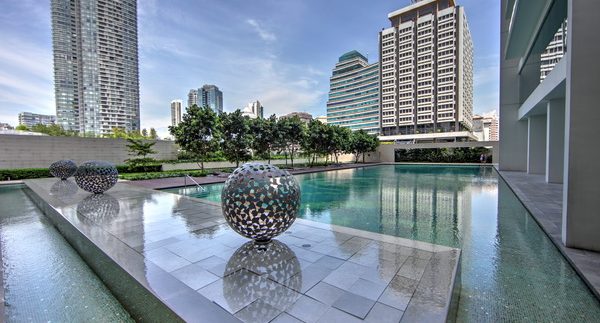Singapore, 4 Jan 2018 – The flash estimate of the private residential property index for 4Q2017 was released by URA today.
Given that it is the second consecutive price increase across all market segments, the residential market has indeed turned seller favourable, underpinned by the strong purchaser demand arising from the brighter economic prospect, high liquidity and continued collective sales fever. This is particularly apparent in the luxury segment, also known as the Core Central Region (CCR).
In fact, CCR saw the fastest pace of increase in six and a half years since the 2Q2011. CCR led the price increase in the non-landed segment, which saw pace of increase accelerated in the fourth quarter of last year. The 1.6% increase in CCR can be partly attributed to the brisk sales of Martin Modern, which was 45% sold by end of November 2017.
The median price of Martin Modern also rose to $2,461 psf in November from $2,152 psf in July 2017 when it was first launched. This is also a clear sign that more discerning buyers and investors are finding value in this segment given the narrowing price gap between luxury and mid-tier and mass market segments, which gave developers and sellers more pricing power.
Although the price growth in 4Q2017 moderated for the mid-tier (RCR) and mass market (OCR), it is not cause for concern at the moment, because there haven’t been many new launches in the past quarter in these two segments on the back of diminishing inventories of the developers.
Given that some developers also held back new launches in anticipation of the market recovery, the price increase for these two segments could be just taking a breather before gearing for more upside in the coming quarters. The transactions in the resale market have also been propped up, as some sellers from older resale projects with en bloc potential have substantially increased the asking price.
Although the recovery is only at its nascent stage, we do expect price increase to pick up pace in the coming quarters when developers are gearing up for new launches, which will likely see a price increase of around 10-15%, compared to the recent transactions in the existing launches in the vicinity. Owners from successful collective sales in 2017 will also come back to the market to look for replacement homes, after they receive their sales proceeds which could be as early as the first quarter of this year.
As such, continued price increases across all segments are also expected, as market conditions are favouring a sustained recovery for the whole of 2018. Buyers who have earlier preferred to adopt a wait-and-see attitude have also been increasingly coming back to the market, for fear that prices could rise beyond their reach.





































